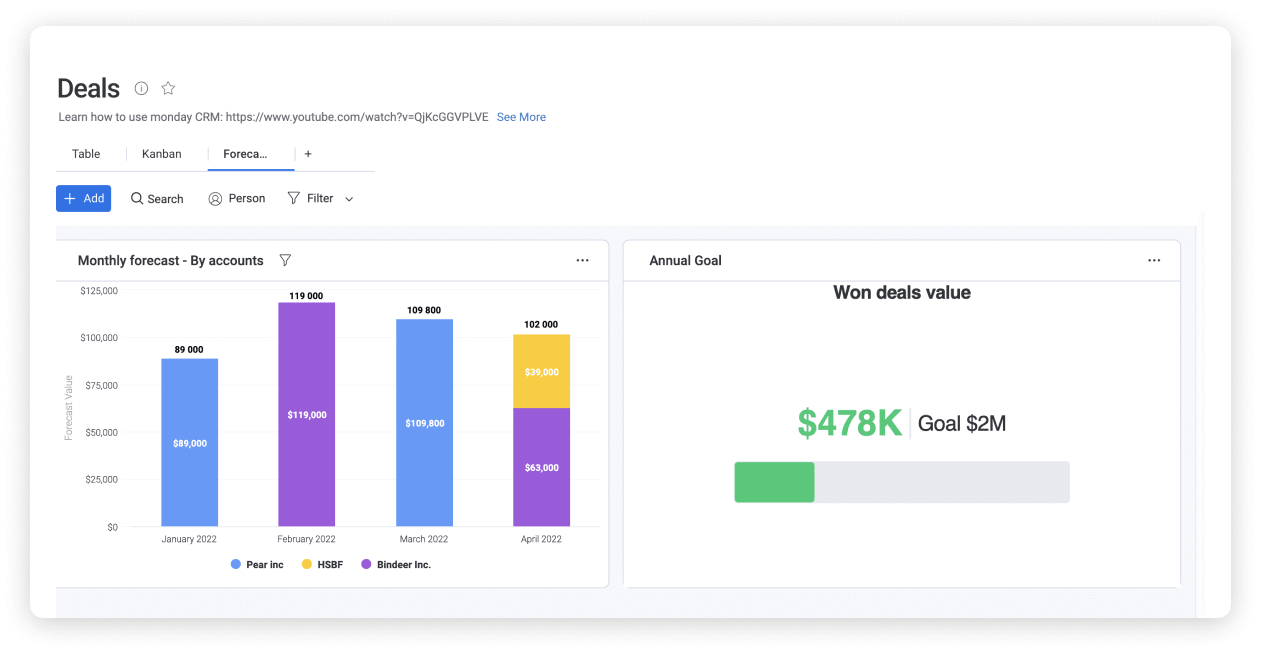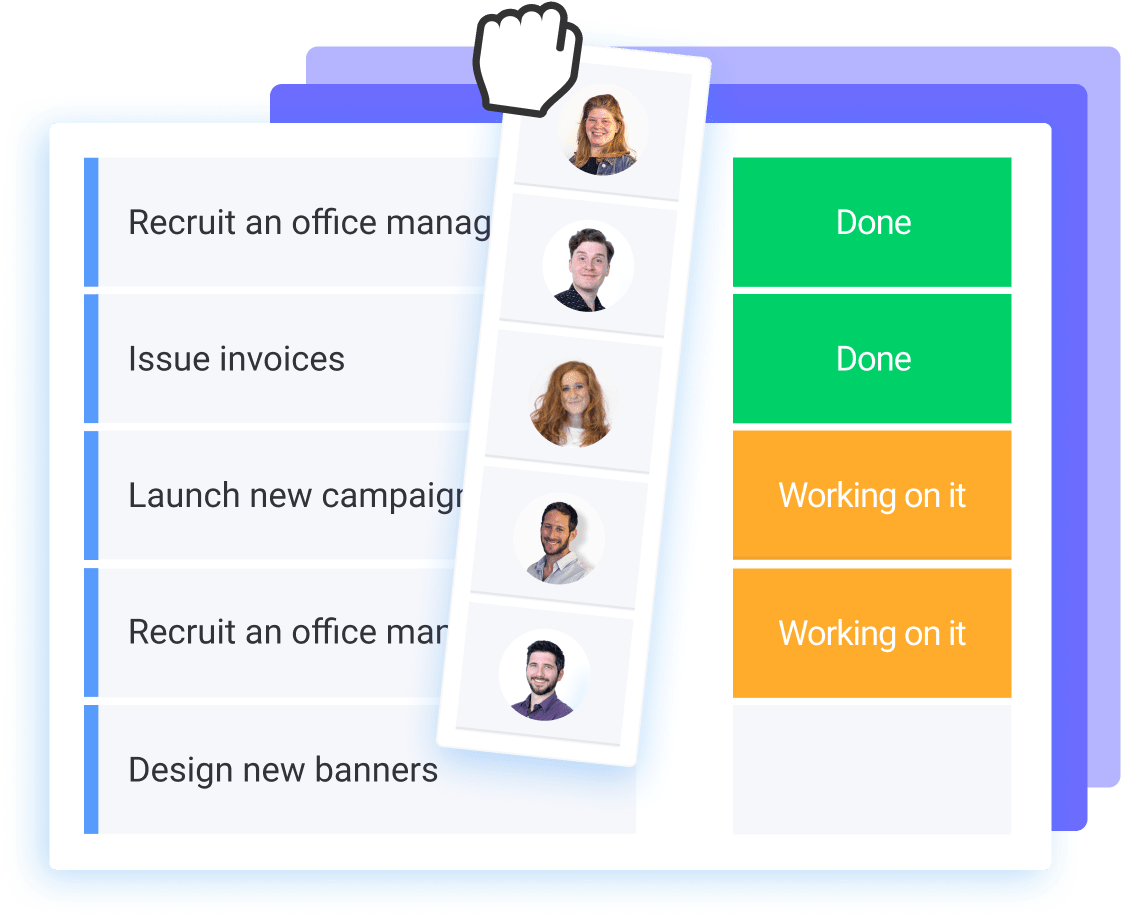
Sales pipeline template for 2022
Effectively capture leads, track sales pipelines, and manage contacts easily. Use our template to forecast revenue, generate insights, and learn where to focus your efforts.

Integrate with your favorite tools
Tips for managing sales pipeline stages
with our template
For any company, managing customer needs, interactions, and sales teams' processes is a challenge. Simplify the process with our sales pipeline template. Our template—which connects to your marketing efforts by capturing and importing leads— provides a visualization of where all deals stand, stores and manages contacts, and a lot more. Check out a few ways our template will help you manage all sales stages.
Sales pipeline template key features
When you create a CRM with our template, you’ll access features that will help you boost your sales team's performance.
Multiple views See your data your way with visualizations including: table, chart, form, calendar, and others. Customizable automations Leave repetitive work behind. Instantly send emails when due dates arrive or customize your own automations in minutes. Easy integrations Continue working with your favorite tools, such as Salesforce, Hubspot, or Mailchimp and other popular solutions.

Seamlessly manage your sales pipeline
Integrate your favorite tools, easily sync with team members during any stage, and capture more leads.
Related templates
Frequently Asked Questions
- What is a sales pipeline example?A sales pipeline could allow you to capture leads, track sales, and manage contacts. The monday.com sales pipeline for example, also lets you easily forecast revenue, identify insights, and learn where to focus your efforts.
- What are the stages of a sales pipeline?There are typically seven stages in a sales pipeline. These will include:
- Prospecting: helping prospective customers discover your business
- Lead qualification: giving a demo or holding a meeting to help assess whether they'd make a purchase
- Proposal: showing how you can meet the potential customer's needs
- Negotiation and commitment: discussing the scope of work, pricing, and other elements
- Opportunity won: closing the sale
- Post-purchase: onboarding and account management
- Why is a sales pipeline important?A sales pipeline is important because it can provide accurate forecasting, give managers a look into each sales rep's activity, and assess whether the team will reach their quarterly goals. On a Work OS like monday.com, sales teams can use the template to deliver a top notch customer experience using one workflow.
















































